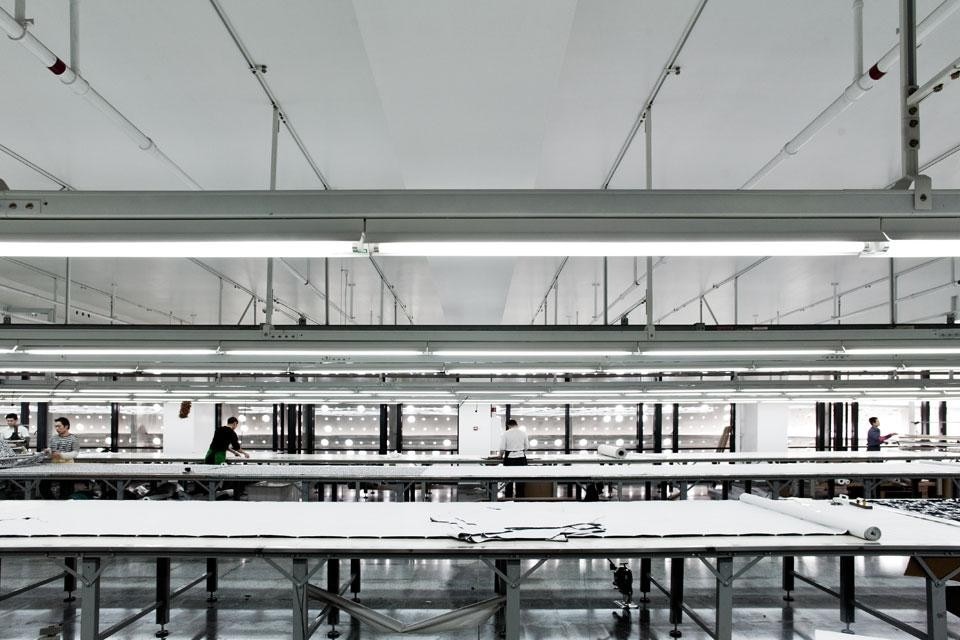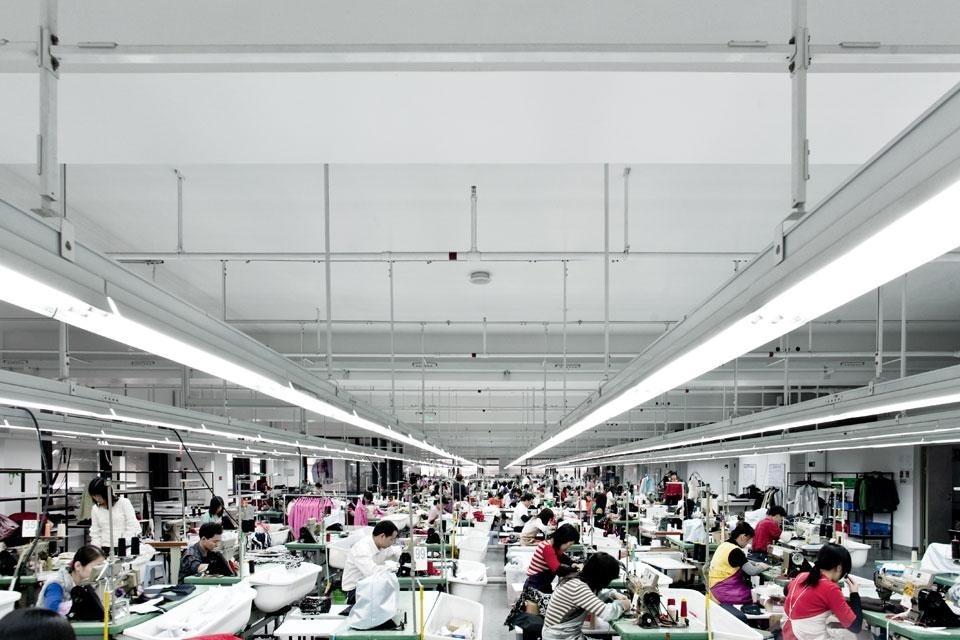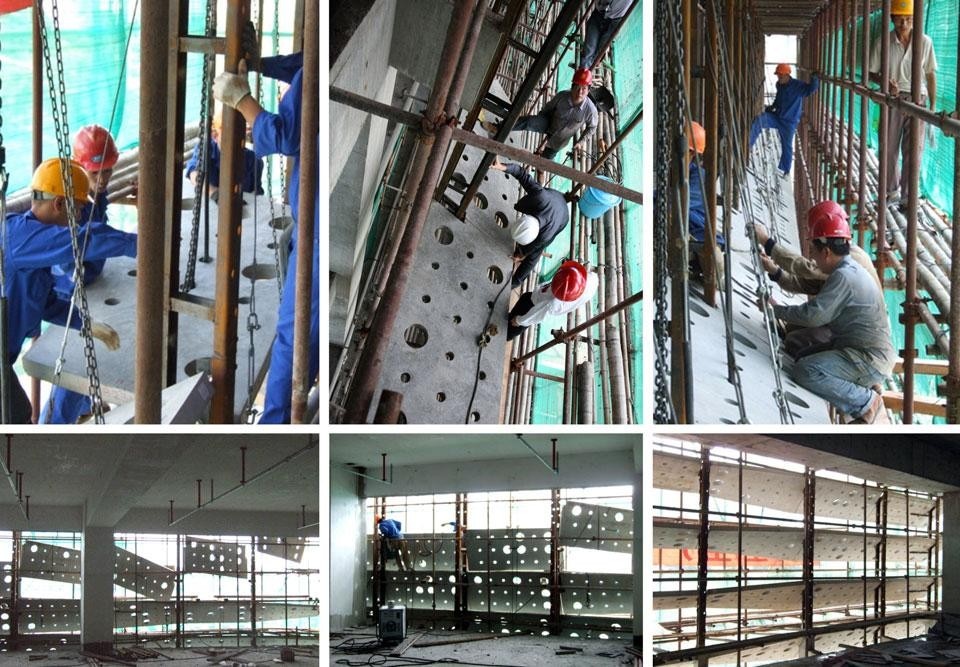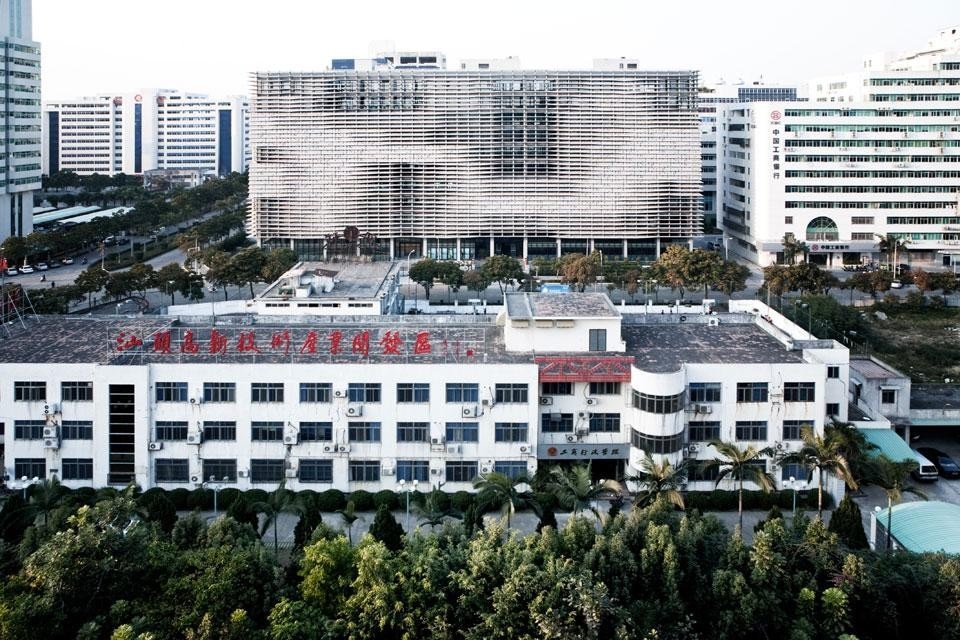Completed in 2008 by Mehrdad Hadighi of Studio for Architecture and Tsz Yan Ng, the building houses all of the functions of the Lafayette 148 clothing label and is organized around the flow of production, literally from conception to shipment of the final product. Office and design studios are placed at the top. Each stage of production is stacked on the floors below. The entry level functions as showroom and has the ability to transform into a runway. The building is, however, much more than a diagram of production. Throughout the building the architects deftly carved into the block to allow light to penetrate into the core and even provide exterior spaces that one is able to occupy. These spaces also help to mitigate the use of artificial cooling by drawing hot air from the building. Post-tensioned beams span the entire width of the floors, thus removing any need for interior columns. The result is a truly free plan that accommodates the wide variety of programmatic needs as well as offering bright and open workspaces.
It is difficult, however, not to catch yourself staring at that façade.
Composed of a series of free flowing concrete fins, the façade flirts with the viewer offering a peek here and there. At night it becomes even more revealing. But is this simply another exercise in the recently fashionable façade wrapping? The Fabric Tower by Atelier Maferdini (Guiyang China, 2008) offers a telling counterpoint. According to Manferdini's website, the 14,000 square metre housing tower is, "an articulate response to the site's natural landscape and its minority cultures, expressing a contemporary, progressive, creative, and original vision of local traditions."
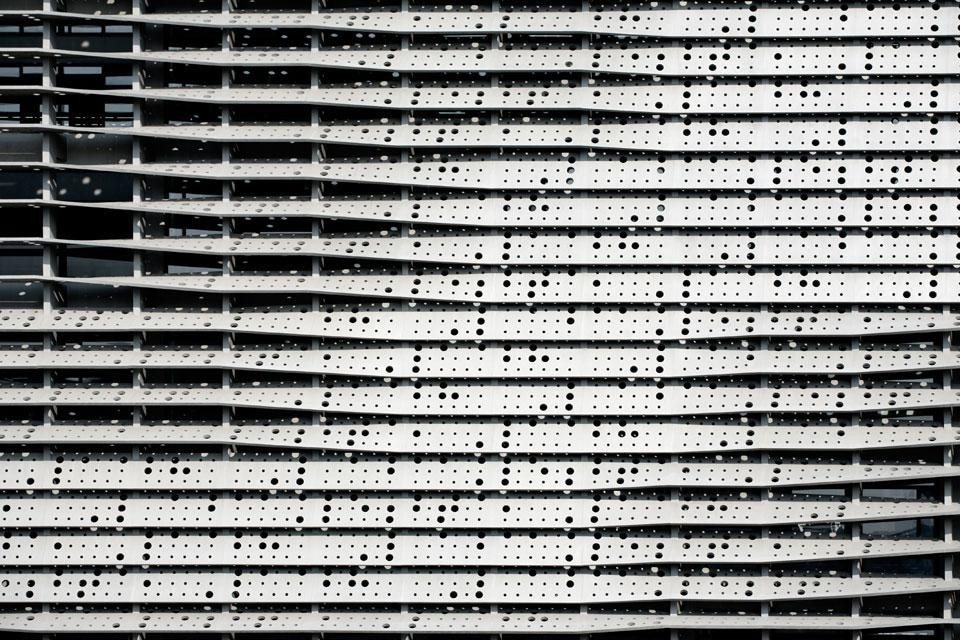
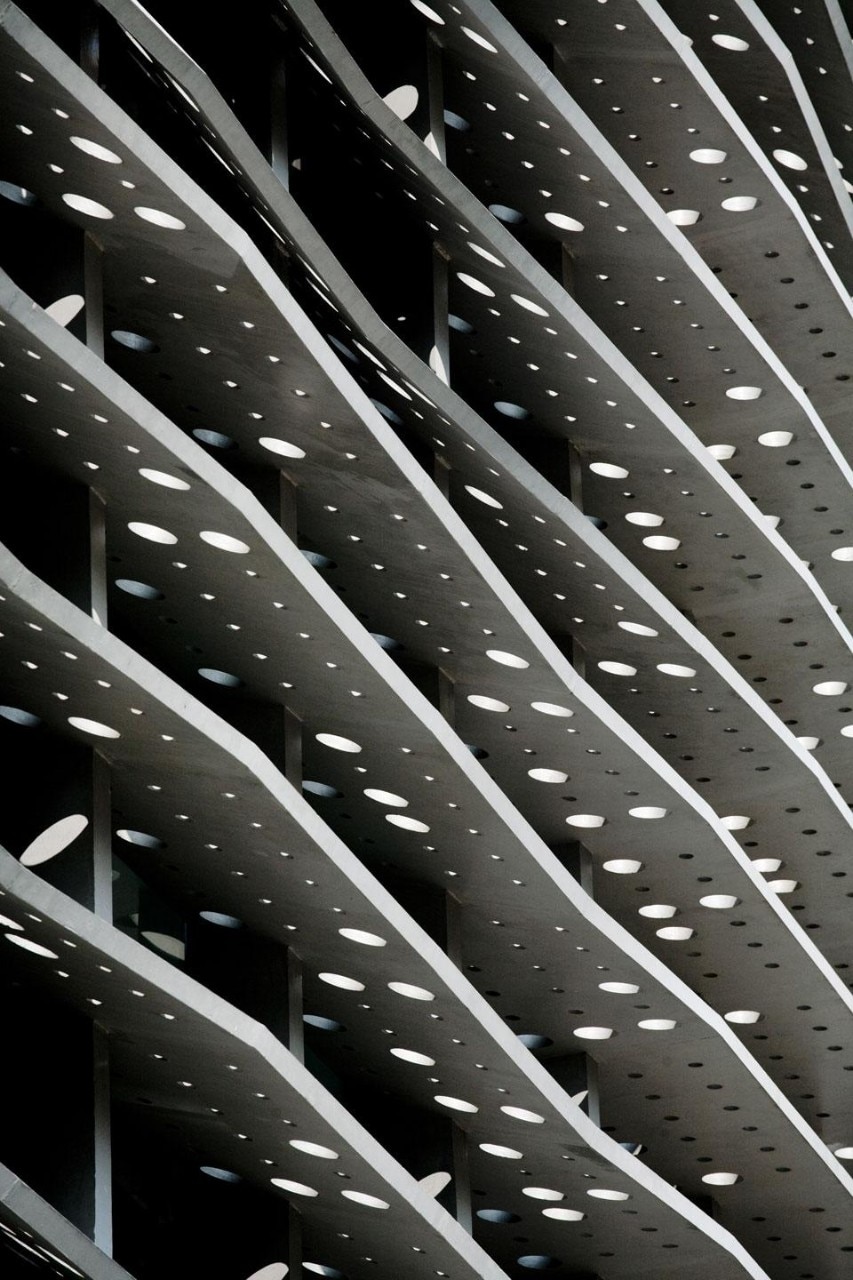
Contrary to the unfortunately all too typical scenario that finds large western companies exploiting the inexpensive, and often unethical, labor practices in China, at Lafayette 148 the architects are dependent upon but also develop the local tradition
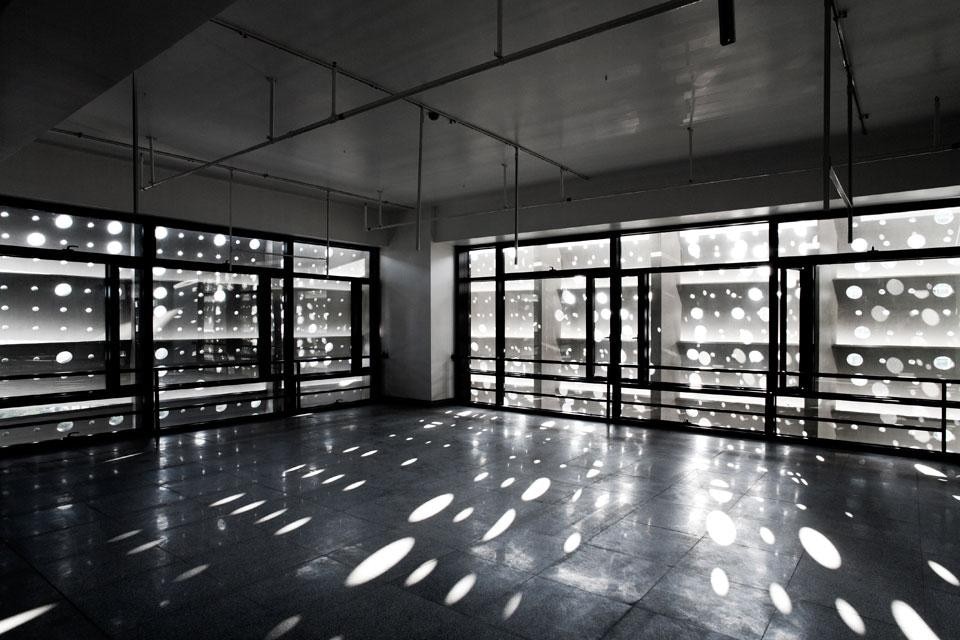
Each fin was produced on site and with local labor. Holes are punched out of the concrete fins. The architects explain that the holes themselves are a representation in braille of the company's name. Although this might be a rather oblique reading, the holes in the fins perform in a number of fascinating ways. The holes lighten the twisted fins to be more easily hung. During the construction process, chain pulleys looped through the holes and allowed for the fins to be picked up, transported and finally set in place. The holes also provide for a play of shadow on the interior surfaces. Contrary to the unfortunately all too typical scenario that finds large western companies exploiting the inexpensive, and often unethical, labor practices in China, at Lafayette 148 the architects are dependent upon but also develop the local tradition. The product is not, however, exported for profit but rather stays on site. In fact, this mode of fabrication could only occur in a situation such as the one in Shantou.
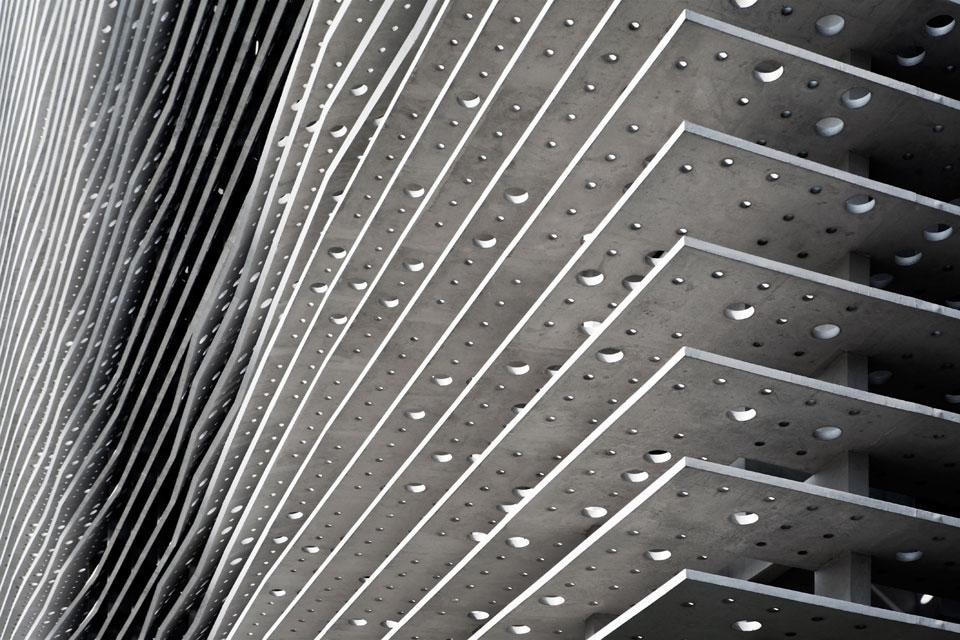
Elegant, indeed.
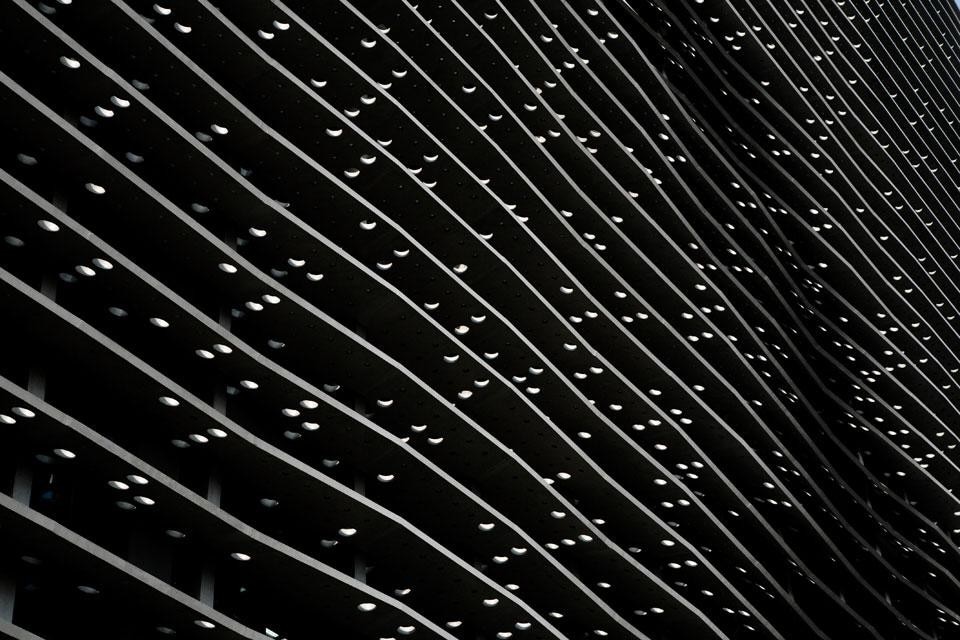
Project Architects: Mehrdad Hadighi of Studio for Architecture and Tsz Yan Ng
Architect of Record: Shantou City Construction Consortium
Design Team: Mehrdad Hadighi, Tsz Yan Ng, and Christopher Romano
Project Team: Adesh Michael Singh, Michael O'Hara, Jose Chang, Maciej Kaczynski, and David Nardozzi
